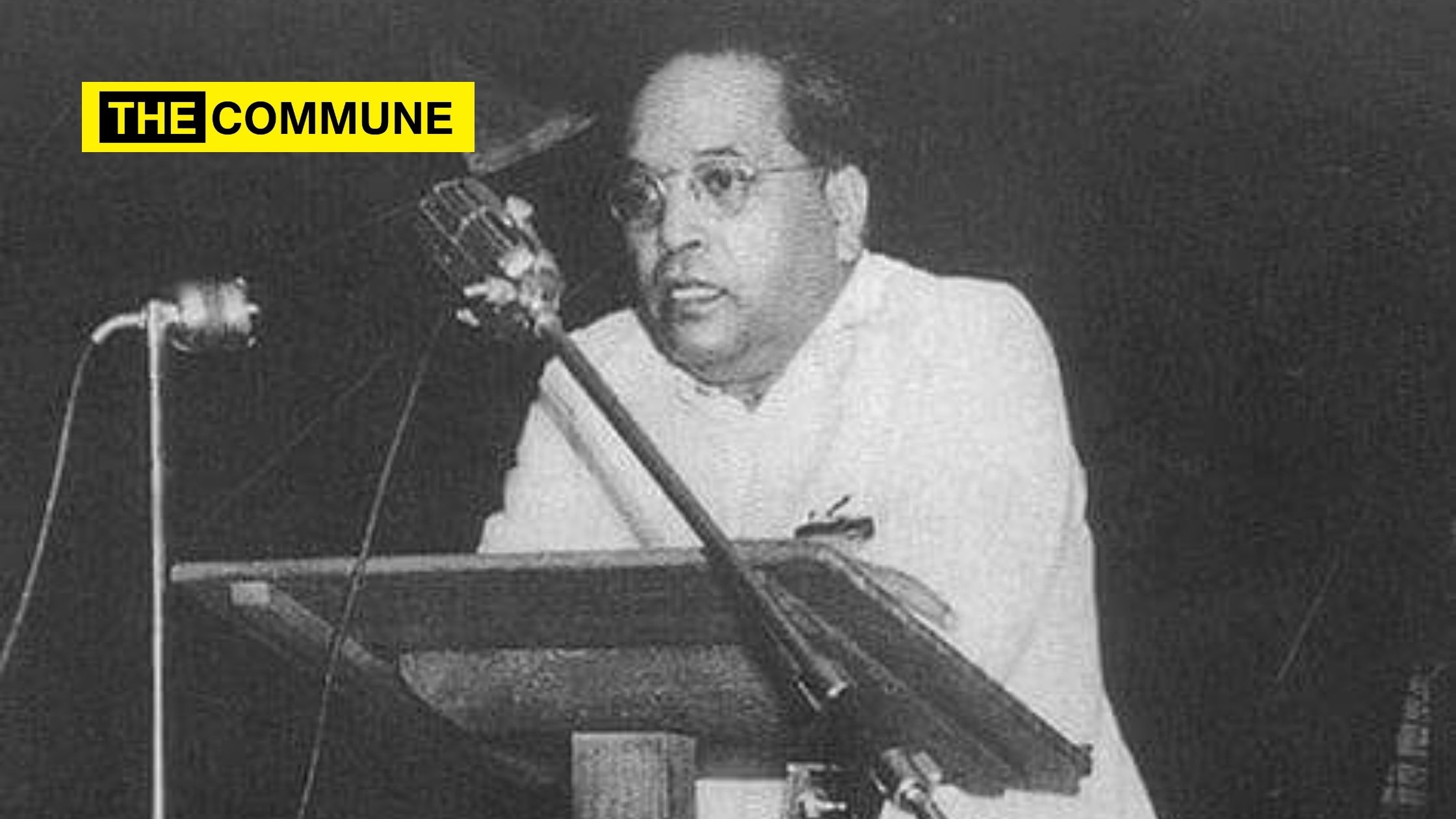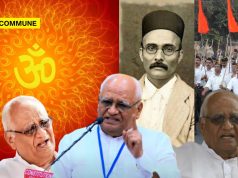
Ever wondered why people always associate only works like “Annihilation of Caste” and “Riddles in Hinduism” with Ambedkar?
Ever heard of the book “Thoughts on Pakistan”, or “Pakistan or Partition of India”, or “Buddha, China and Communism”?
No? Don’t worry, you are not alone. These pieces of art by Ambedkar are deliberately concealed from mainstream discourse for a number of reasons. But the two major reasons why these books were hidden from the public at large are as follows-
1) Due to Ambedkar directly challenging the crux and edifices that the two major Abrahamic faiths are based on,
2) Due to Ambedkar desecrating the diktats of Communism.
Let us analyse two major questions at this juncture.
1) So what exactly were Ambedkar’s views on the major “minority” religion of the world at that point in time – Islam and why was he more brutal towards the assessment of its theology as compared to even Hinduism?
2) Why did Ambedkar choose to remain inside the Dharmic fold by moving to Buddhism out of Hinduism?
In Page 220 of his book “Pakistan Or Partition of India” Ambedkar writes as follows,
Islam has all the evils(social evils) that Hinduism does and something more.
“Something More?” What does he mean by this?
Ambedkar substantiates this “something more” by exposing the caste system prevalent in Islam. Islam according to him, characterises Muslims into 3 categories –
- Ashraf
- Ajraf
- Arzal
“Ashraf” means “noble” and the people associated with this Caste are those Hindus who happen to hail from “Upper Castes” and later converted to Islam, “Ajraf” refers to those that belonged to the “lower caste” of Hindus and later became Muslim, and finally the lowermost category of Islam the “Azrals” who were the former “untouchables” among Hindus who went on to embrace Islam eventually.
Often the Azrals are not allowed to enter mosques and while the Ajrafs can enter the mosque, they could never aspire to become the priest or the Maulvi of the Mosque.
There is an internal hierarchy within the “noble” Ashraf class too in the form of Sheiks, Sayyids, Pathans, Moghuls, etc.
But quite astonishingly despite these hierarchies inside Indian Islam, it is overlapped by an overall hierarchy in World Islam.
The Arabs have a different idea of hierarchy which goes in a particular order-
- Ashrafs,
- Mawaalis
The Arabs claim themselves to be the real Ashrafs or the “nobles”, while the Persian (Iraq, Iran, Syria) Muslims are the inferior “Mawaalis” and the Indian/African/European/Oriental Muslims being the Ajraf Muslims who are not necessarily inferior to the Ashrafs but definitely sub-ordinate to them. To this date, only the “Ashraf” (Arabs) can get to be priests inside the Kaaba of the Great Mosque of Mecca.
But beyond all of these hierarchies inside Islam, the greatest untouchables according to its theology are the “Kafirs” or the non- believers who are according to Ambedkar “equated to urine, sweat and faeces as per the doctrines of the religion”.
The above reasons are precisely why Ambedkar summarises Islam the following way,
“The universal brotherhood of Islam is not the universal brotherhood of mankind”
It had always been Ambedkar’s position that conversion to any Abrahamic faith from the Hindu fold “de-nationalises the citizen” which means that the moment a Hindu becomes a part of an “imported religion”, he shall lose all sense of nationality and ultimately shift his loyalty to an entity that does not belong to his Mother land. This phenomenon, Ambedkar believed was an issue of national security.
Precisely for this reason, in Chapter 5 of his book “Pakistan or Partition of India” Ambedkar calls for the removal of Muslims from the Indian Army as he believes that an increased number of Muslims in the army shall cost India dearly in its future pursuits towards security.
One can only imagine what would have been the reactions to such an appeal had the same been made by Hedgewar, Guruji Golwalkar or Veer Savarkar. But since it was Ambedkar in this case, the entire story ended up being white-washed.
But after all, Ambedkar was proved to be right in 1948 when the Muslim commanders of the Raja Hari Singh’s Kashmir Army reneged on him by joining hands with the invading Pakistani Pathan forces thus leading to the takeover of what we know today as “Pakistan Occupied Kashmir”.
Ambedkar was once again proven right when Punjab was partitioned with a major chunk of it given away to Pakistan solely because of the 3 Christian candidates of the Parliament voting in favour of the Muslim League.
But now that we have looked into Ambedkar’s views on foreign faiths, let us segway into the core crux of this article, “Did Ambedkar want the abolition of Hinduism?”
Before answering this question, we shall have to ask ourselves, “Why did Ambedkar convert to Buddhism?” It was an unconventional option to choose, but nevertheless it proves a significant point which is to say that regardless of Ambedkar’s justifiable disappointments with the Hindu faith, he chose to remain in the Dharmic fold by choosing to move to Buddhism.
Upon being asked by an English reporter as to why he chose to take this route instead of the conventional option of choosing an Abrahamic faith, Ambedkar replies ” By moving to Buddhism from Hinduism I am simply moving from one room of the house to another as opposed to moving to a different house altogether”.
This shows the affiliation the man had with Indic faiths and how he understood the significance it posed on the Indian society at large.
At the end of the day Ambedkar only called for the “Annihilation of Caste” and not the “Annihilation of Hinduism”.
Ambedkar once along with a dear friend of his, the RSS affiliate Dattopant Tengadi met with several Hindu Mutt Saints including the famous Shankaracharya Mutt where he kick-started major reforms to eliminate systemic untouchability prevalent in the country. Ambedkar always was of the impression that the Indic faiths were malleable and hence could be reformed with enough beating.
In fact during the Constitutional Assembly debates of 17th September 1949, as Chairman of the Drafting Committee, Ambedkar called for Sanskrit to be made the official language of the Union of India owing to its rich cultural and spiritual significance to this land and also because of its innate capabilities to serve as a tool to bind the souls of India’s majority.
But unfortunately, owing to lack of majority, the proposal had to be turned down by the assembly. That day marked the beginning of the promotion of English, a language known to hardly 2% of the Indian population then, as the recognised language for all official communications of the State.
Addititonally, the definition of a Hindu as authored by Ambedkar in Article 25(2) of the Indian Constitution is as follows,
Hindus shall be construed as including a reference to persons professing the Sikh, Jain, or Buddhist religion.
This simply goes on to substantiate how Ambedkar saw the derivatives of Hinduism, namely Sikhism, Jainism and Buddhism merely as smaller parts of a greater whole. Therefore, he draws a clear parallel between who is a Hindu and who isn’t and at the same time making himself a Hindu as per constitutional standards.
Additionally, some believe that it was based on earlier proposals made by Dr. Ambedkar in the Constituent Assembly that led to the provisions of the Hindu Marriage Act, 1955 which gives a woman the right to obtain instant divorce if her husband is to convert to a religion that is NOT Hinduism, Sikhism, Jainism or Buddhism.
All of these give us a revelation that an honest analysis of the persona that was Dr. Bhimrao Ramji Ambedkar would help us understand that he was not even close to being a “Hindu-hater” as depicted by those academics and scholars of Modern Indian history in top institutions and think-tanks across the length and breadth of India and the world.




